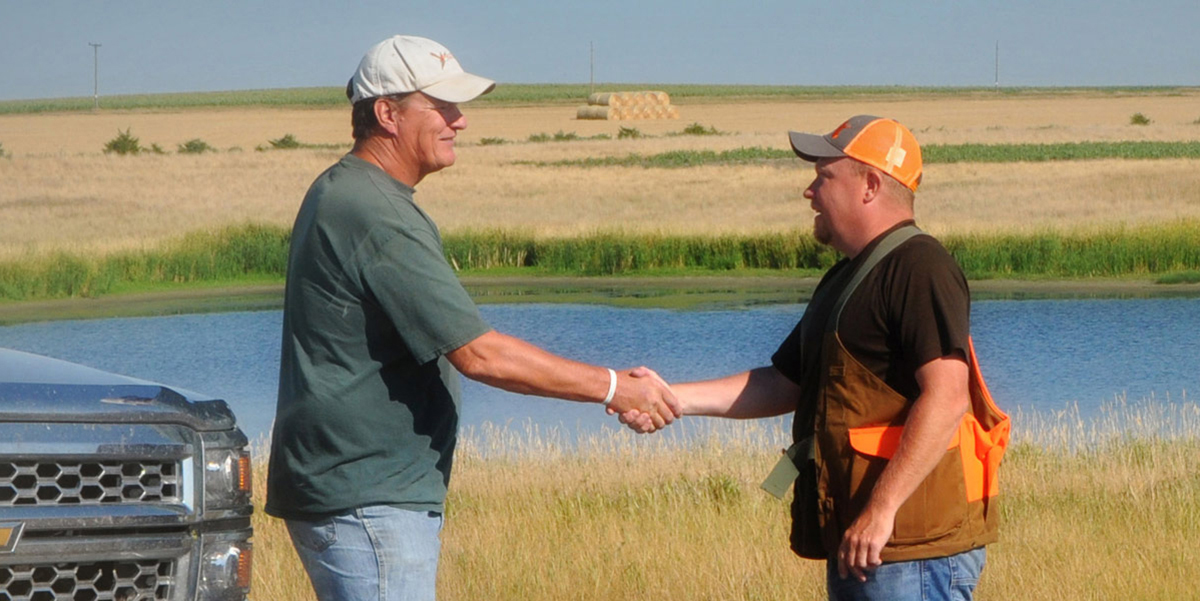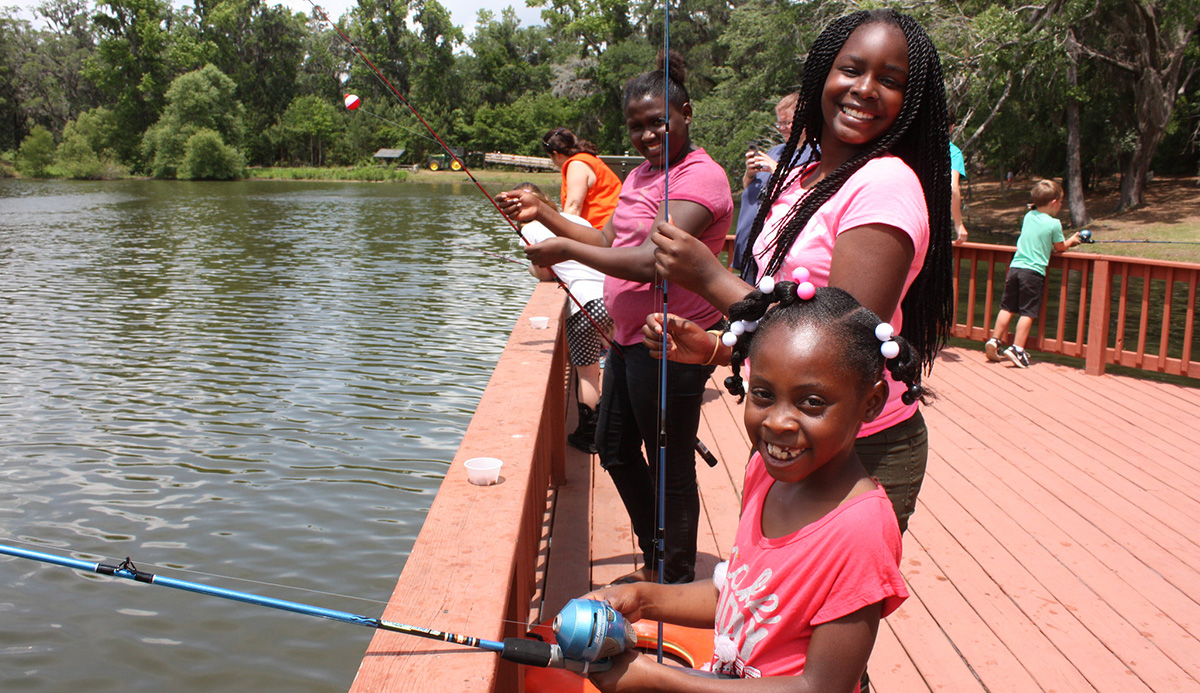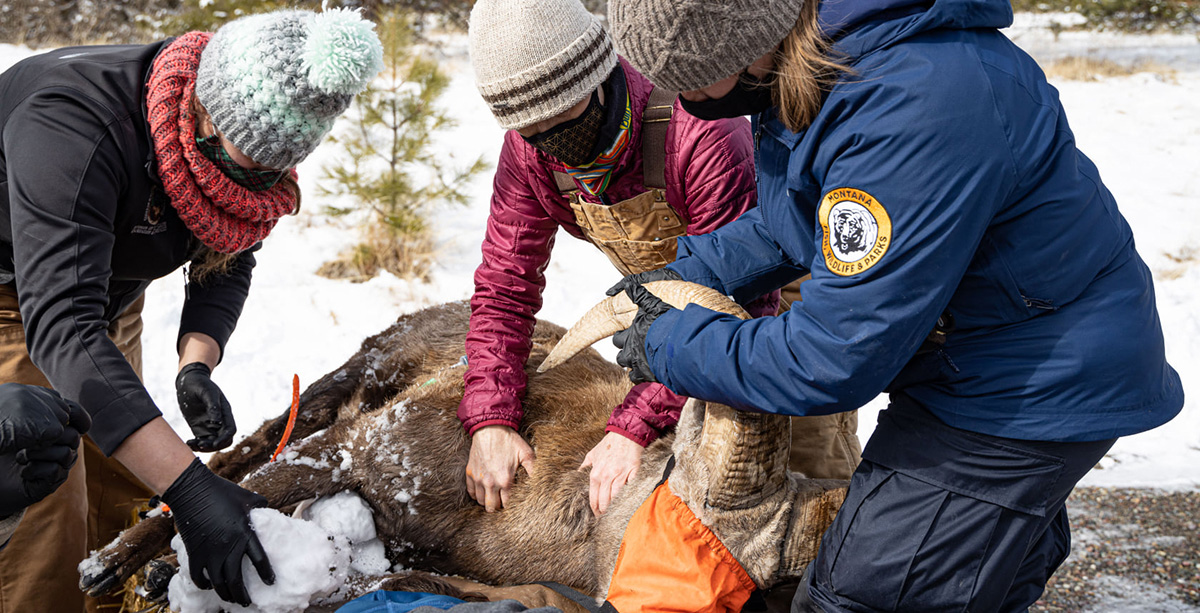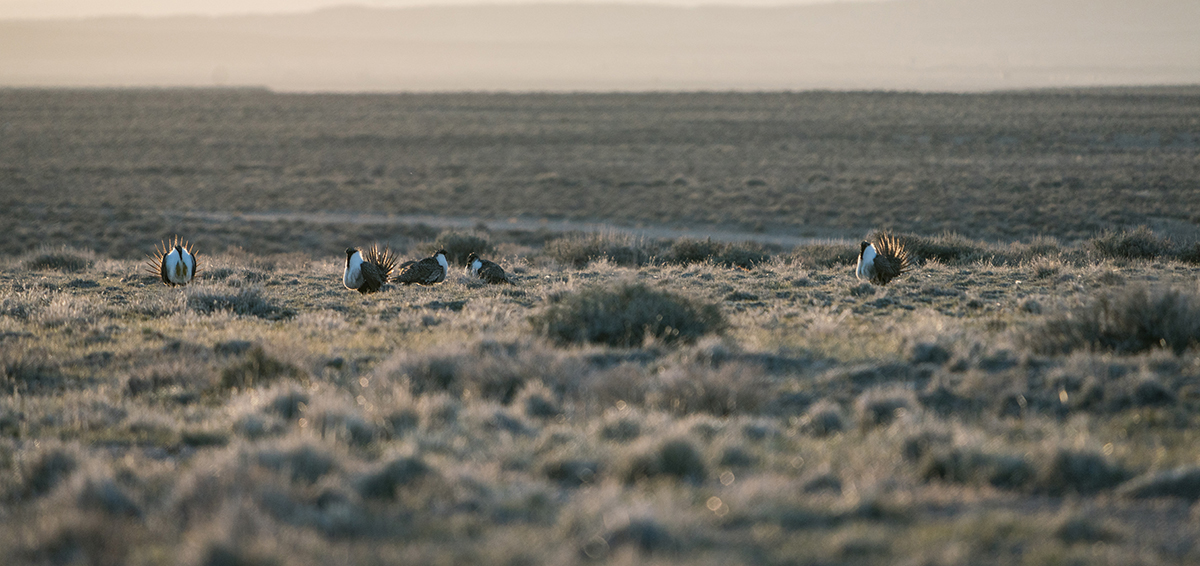habitat clean water header gradient lael p johnson
Do you have any thoughts on this post?
Today, Interior Secretary Deb Haaland cemented historic protections for the Boundary Waters Canoe Area Wilderness by signing an order to withdraw approximately 225,504 acres of public land in the Rainy River Watershed of Northeast Minnesota from federal mineral leasing for a period of 20 years. The mineral withdrawal order will ban federal hard rock mineral leasing upstream of the Boundary Waters and Voyageurs National Park.
This monumental decision ensures that future generations of hunters, anglers, and paddlers will be able to fish for lake trout, chase grouse, and share a campfire under the stars in America’s most visited wilderness for decades to come.
Across the country, this significant decision is being celebrated. Sportsmen for the Boundary Waters would like to express our deepest gratitude to this administration for its leadership in protecting the BWCA from sulfide-ore copper mining.
Not only is this announcement a milestone in the history of the BWCA, but it also affirms the immeasurable value of the Boundary Waters to Minnesota’s outdoor economy, its unparalleled recreational opportunities, and its contribution to the legacy of our nation’s public lands and waters. Thank you to all who have stood shoulder to shoulder with us for years in defense of the Boundary Waters.
The Boundary Waters provides world-class opportunities for people of all ages and abilities to hunt, fish, and camp in a true backcountry Wilderness landscape. Today’s decision guarantees that the Boundary Waters is a place where Minnesota’s hunting and fishing heritage will be protected for future generations.
Sportsmen for the Boundary Waters would like to thank every hunter, angler, and BWCA advocate who spoke up to preserve the integrity of this wild and truly special place. The ongoing work to conserve the Boundary Waters watershed would not be possible without our partner organizations and enthusiastic supporters, and we are forever grateful for the ongoing support from our community.
Conservation leaders across the country are applauding today’s decision:
“The TRCP applauds the administration’s decision to safeguard the Rainy River watershed from mining for the coming two decades, and we will continue to work to conserve the Boundary Waters permanently,” said Whit Fosburgh, president and CEO of the Theodore Roosevelt Conservation Partnership. “This world-class fishing, hunting, and canoeing destination has provided generations of Americans with important outdoor experiences, and today’s decision will support future opportunities.”
“The time I’ve spent in the Boundary Waters, especially with my family by my side, are memories I deeply cherish,” said Land Tawney, CEO of Backcountry Hunters & Anglers. “Today’s decision by this administration to protect these unique public lands and waters will not only conserve an irreplaceable landscape; it will also ensure that experiences like mine will be possible for all Americans and their families to enjoy forever.”
“The Boundary Waters Canoe Area Wilderness is one of the most magnificent landscapes in America and provides outstanding habitat for moose, bears, otters, lynx, wolves, and hundreds of species of birds,” said Collin O’Mara, president and CEO of the National Wildlife Federation. “Allowing sulfide-ore mining in the ‘crown jewel of Up North’ would be devastating to the hundreds of wildlife species that make their home in the pristine watershed and would have threatened a billion-dollar outdoor recreation economy that supports 17,000 jobs. Secretary Deb Haaland’s decision is one that future generations will look back upon with gratitude.”
Get caught up on the effort to conserve and protect the Boundary Waters.
Photo courtesy of Sportsmen for the Boundary Waters
Today, the Theodore Roosevelt Conservation Partnership celebrated the return of conservation safeguards to more than 9 million acres of quality fish and wildlife habitat in Southeast Alaska.
The Tongass National Forest is home to some of the most productive hunting and fishing grounds in Alaska. By reinstating the Roadless Rule across the Tongass, the U.S. Forest Service will limit industrial development activities—such as new road building and large-scale logging—across 9.37 million acres of undeveloped public lands. The agency will continue to offer reasonable allowances for restoration activities and community development projects that serve the public interest, such as local hydropower installations. The decision will not affect previously roaded and logged forests.
“The TRCP applauds today’s decision to restore common sense conservation measures to the Tongass,” said Jen Leahy, Alaska program manager for the Theodore Roosevelt Conservation Partnership. “Sitka black-tailed deer, brown bear, salmon, and many other species in the Tongass depend on mature, intact forests and watersheds to thrive. Our public forests sustain our communities, and we should be managing them for today’s needs and for generations to come.”
Learn more about the impact on Sitka black-tailed deer here.
As the world’s largest intact temperate rainforest, the Tongass National Forest plays an important role in buffering the effects of climate change in Alaska and beyond. These hardworking, mature forests can’t provide climate or habitat benefits if they are opened to industrial development. The Roadless Rule ensures that intact habitat within roadless areas in the Tongass will remain that way.
Reinstating the Roadless Rule on the Tongass is one component of the Southeast Alaska Sustainability Strategy, unveiled by the U.S. Department of Agriculture in July 2021. The sustainability strategy aligns the management of the Tongass with local values and the region’s biggest economic engines: tourism, recreation, and fishing.
Pairing the restoration of conservation safeguards with new, robust investments in Southeast Alaska’s economy, the USDA’s framework was developed in partnership with local communities, Alaska Native leaders, and various stakeholders as a balanced solution that promises a sustainable future for a vibrant region. The strategy also ensures that the Tongass National Forest will remain an iconic hunting and fishing destination.
“Tongass National Forest safeguards have long been a TRCP priority because of the benefits they provide to continued hunting and fishing opportunities in the region,” said Whit Fosburgh, president and CEO of the Theodore Roosevelt Conservation Partnership. “We appreciate USDA prioritizing sustainable forest management practices that will result in productive habitats, improved recreational opportunities, and more resilient communities.”
Leading up to the recent announcement, more than 250,000 Americans asked the administration to restore roadless area conservation measures on the Tongass National Forest, including a broad spectrum of hunters, anglers, recreation business owners, Tribal leaders, and other conservationists.
Get caught up on the effort to maintain and restore conservation safeguards in the Tongass.
Photo by Ben Matthews
As of January 2023, the U.S. House of Representatives “rules” package, which determines how the chamber will operate this session, includes a change that makes it easier for the federal government to sell off or give away your public lands.
The new rule removes the Congressional Budget Office’s requirement to consider the financial value of public lands if selling or transferring those lands to other entities. American sportsmen and sportswomen handily beat back similar efforts to devalue and shift ownership of public lands nearly a decade ago—and we are ready and willing to do it again.
America’s 640 million acres of federal public lands—including lands managed by the Bureau of Land Management, U.S. Forest Service and U.S. Fish and Wildlife Service—provide irreplaceable fish and wildlife habitat and public hunting and fishing opportunities for millions of Americans. These lands are so important for access in the West that nearly three-quarters of Western hunters depend on them for access, and they support the $689-billion outdoor recreation economy.
Quite simply, hunting and fishing would not exist as we know them if it weren’t for the public lands that provide all Americans with outdoor opportunities, free of charge.
The idea that our public lands should be sold off and given away seems to resurface every decade or three. It usually goes like this: A group of ill-informed decision-makers come to the conclusion that public lands are frivolous and unnecessary and should be sold off or transferred to some other authority. The idea sprung up in the 1970s and early 1980s with the Sagebrush Rebellion and then resurfaced in the 2010s.
From 2014 through early 2017, this idea was pushed hard in state legislatures and in Congress by a group of misguided lawmakers. In 2015 alone, a total of 37 individual bills were proposed in 11 Western states, all aimed at selling or transferring your public lands. But things really came to a head in early 2017, when former Congressman Jason Chaffetz introduced H.B. 621, which would have sold off 3.3 million federal acres.
Hunters and anglers recognized these bills as a threat and mobilized in force to stop them. For our part, the TRCP launched its Sportsmen’s Access campaign, which enabled more than 66,000 individuals to send letters to their lawmakers, encouraging them to oppose any effort to undermine public lands. The TRCP further joined with 114 national and local Western hunt-fish organizations and worked with 23 counties in six Western states to oppose this misguided idea.
In the end, the vast majority of state bills failed and most state and federal lawmakers—getting the message that the idea was deeply unpopular—quickly distanced themselves from the position that our public lands should be sold or transferred. On the campaign trail that year, Donald Trump stated his clear opposition to the concept of selling public lands, essentially ending the debate—until now.
Unfortunately, some lawmakers are again aiming for your public lands, and they’ve started their efforts with the recent House rules change. The good news is that we’ve never seen an issue resonate more clearly with hunters and anglers than the threat of public land disposal.
The TRCP will continue its important work of collaborating on real-world solutions to habitat and access challenges in this Congress. But if lawmakers want to pick this fight again, we are also ready and willing to take them on.
Photo by Josh Metten (@joshmettenphoto)
The 117th Congress was a productive one for hunters and anglers. Together, our community succeeded in passing legislation to digitize and map public land access, provide landowners with tools to address our changing climate, invest in Everglades restoration, and, most recently, address the increasing spread of chronic wasting disease.
The 118th Congress is now underway, with narrow majorities in both the House and Senate and a considerable workload in the coming year. Fortunately, conservation issues have a way of garnering bipartisan agreement—a necessity as Congress takes up landmark legislation like the 2023 Farm Bill. The TRCP and our partners look forward to working with both sides of the aisle to advance conservation solutions in the coming months.
Here’s what’s at the top of our list for habitat and access in 2023.

Providing over $6 billion each year for voluntary, incentive-based conservation, the Farm Bill is the biggest piece of legislation impacting fish and wildlife in the U.S. Congress crafts a new Farm Bill every five years, and with the last bill expiring in September, 2023 is when decisions will be made that shape habitat on private lands for half a decade.
That is why the TRCP and our partner groups have been hard at work over the past several months to develop a comprehensive platform for what hunters and anglers would like to see in the 2023 bill.
This includes tripling investment in the popular Voluntary Public Access and Habitat Incentive Program, which provides dollars directly to state agencies to expand local walk-in hunting access opportunities by working with willing landowners. VPA-HIP provides a significant return on investment, with $5.20 in economic activity for every dollar invested in the program. That supports not just the landowners that choose to enroll, but also local businesses like game processors, diners, motels, gas stations, and more. The access, of course, is a boon for sportsmen and sportswomen, particularly in states where there are few public lands. In fact, when polled, nearly 60 percent of hunters in Illinois said that the land made available through the Illinois Recreational Access Program was the only huntable acreage accessible to them.
Beyond VPA-HIP, hunters and anglers are looking to lawmakers to improve the Conservation Reserve Program to ensure it remains a premier tool for habitat conservation, prioritize the enrollment of conservation easements to keep working lands and their habitats in place, and ensure that wildlife remain a co-equal focus of USDA conservation programs as climate mitigation becomes a growing priority in agriculture.
Outside of the Farm Bill, the North American Grasslands Conservation Act, which mirrors the successful landowner-led model of the North American Wetlands Conservation Act, remains our best opportunity to curb the rapid depletion of our nation’s most imperiled ecosystem.

As lawmakers negotiated an end-of-year funding deal in late 2022, a proposed package of recreation and public lands bills wound up on the cutting room floor and should receive top billing in 2023.
This starts with the America’s Outdoor Recreation Act, a bipartisan package of bills developed by Senators Manchin and Barrasso to enhance recreation opportunities on public lands. Included are bills directing the U.S. Forest Service and Bureau of Land Management to expand access to shooting ranges and complete road-use planning on their lands. Other bills would streamline permitting processes for guides and outfitters, limit the spread of invasive species, support gateway communities, and make it easier for outdoorsmen and women to experience our vast public lands.
In addition to the recreation-focused legislation, there are several locally developed land management changes and protections for top-notch hunting and fishing destinations like Oregon’s Owyhee Canyonlands, Nevada’s Ruby Mountains, and Colorado’s Thompson Divide. While some of these bills have been on the table for years, they could see renewed attention in the Senate.
The TRCP has remained engaged in these conversations and continues to work alongside Republicans and Democrats to advance these and other proposals to improve access and conserve one-of-a-kind habitat. Our community is confident in the ability of Congress to unite around these sensible natural resource policies, as they’ve proven able to do so through passage of legislation like the Great American Outdoors Act, America’s Conservation Enhancement Act, and John D. Dingell Conservation, Management, and Recreation Act in recent years.

For more than a century, sportsmen and sportswomen have led the charge on new ways to invest in fish and wildlife habitat. That leadership role continues in 2023 as we look for a way to pass the Recovering America’s Wildlife Act, landmark legislation that would provide $1.4 billion annually in dedicated funding to state wildlife agencies to conserve species of greatest concern. Not only would this new funding restore habitat and benefit hunters and anglers, it would also keep those species from being listed under the Endangered Species Act, minimizing untold costs to the energy industry, developers, and small businesses.
The RAWA was widely celebrated, enjoyed broad bipartisan support, and nearly made it to the finish line in 2022. Now, its base of support is greater than ever before. Hunters, anglers, conservationists, recreators, landowners, and business owners agree on the importance of passing RAWA. While the path is never easy, the TRCP and our partners will be working to expand congressional support, secure approval in the House Natural Resources Committee and the Senate Committee on Environment and Public Works, and send RAWA to the president’s desk in the 118th Congress.

We’re expecting Congress to consider legislation to improve project approvals—especially for energy development, mining, and other infrastructure projects—early in 2023. It may be a surprise to some that challenges with permitting and approvals don’t only slow down development projects, but also the stream and wetland restoration, forest health, and other environmentally beneficial projects. Costly and often redundant planning processes discourage local partners from participating and result in wasted time and energy while federal funds remained locked up with the agencies, rather than benefitting fish and wildlife.
Additionally, when it comes to improving mining and renewable energy development on public lands, hunters and anglers have long fought for bipartisan solutions like the Public Land Renewable Energy Development Act and Good Samaritan Remediation of Abandoned Hardrock Mines Act. PLREDA, for example, would balance renewable energy development and habitat needs, while funding for fish and wildlife conservation projects. The Good Samaritan legislation would reduce existing barriers to abandoned hard rock mine cleanup, making it easier for local partners to help improve water quality and habitat.
Accelerating conservation and restoration projects will ensure that the funds made available by the Infrastructure Investment and Jobs Act and other recent legislative successes touch down on the landscape. In the year ahead, the TRCP will be engaged on both sides of the aisle, bringing conservation and habitat restoration priorities to the permitting conversation taking place in Congress.
For more information, and to take action in support of these critical conservation priorities in the year ahead, visit the TRCP Action Center. To follow important conservation legislation as it makes its way through Congress, follow @theTRCP on Facebook, Twitter, or Instagram.
Top photo by Aaron James.
Theodore Roosevelt’s experiences hunting and fishing certainly fueled his passion for conservation, but it seems that a passion for coffee may have powered his mornings. In fact, Roosevelt’s son once said that his father’s coffee cup was “more in the nature of a bathtub.” TRCP has partnered with Afuera Coffee Co. to bring together his two loves: a strong morning brew and a dedication to conservation. With your purchase, you’ll not only enjoy waking up to the rich aroma of this bolder roast—you’ll be supporting the important work of preserving hunting and fishing opportunities for all.
$4 from each bag is donated to the TRCP, to help continue their efforts of safeguarding critical habitats, productive hunting grounds, and favorite fishing holes for future generations.
Learn More
